Yanan Revolutionary Site: A Cultural Landmark of China’s Revolutionary Era
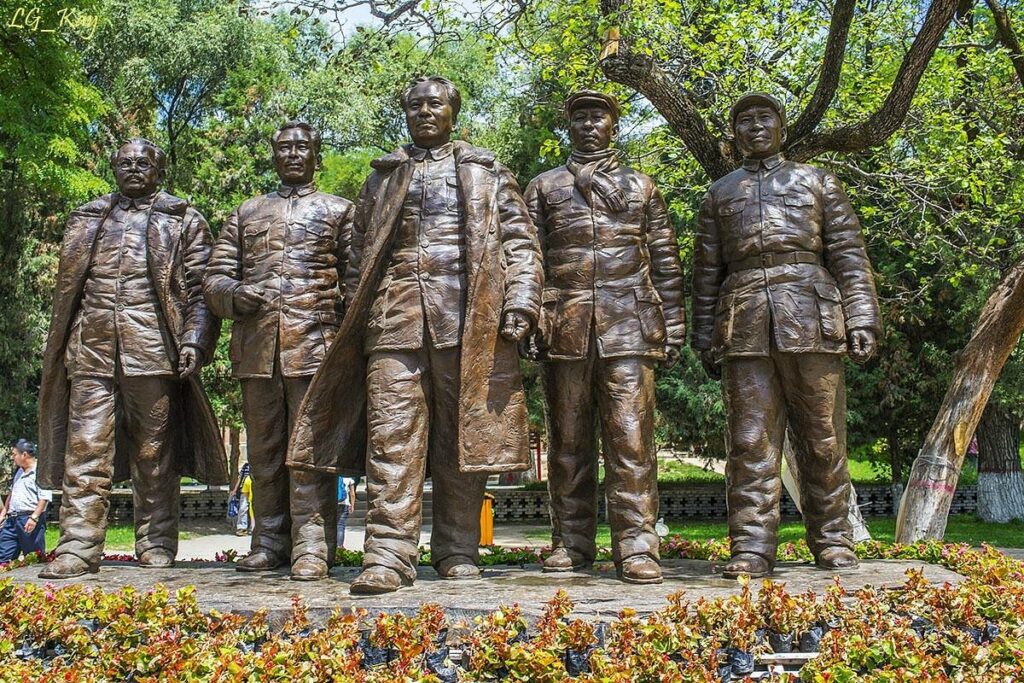
An Essential Guide to Visiting Yanan Revolutionary Site
In This Guide
- An Essential Guide to Visiting Yanan Revolutionary Site
- The Rich History and Legends of Yanan Revolutionary Site
- Main Highlights: What You Absolutely Can’t Miss
- Planning Your Visit: A Practical Guide
- Tickets: Prices, Booking, and Tips
- How to Get There: A Complete Transportation Guide
- Local Cuisine and Accommodation Nearby
- Frequently Asked Questions
- Final Thoughts on Your Trip
Nestled in the heart of Shaanxi Province, Yan’an is a city steeped in rich history and revolutionary spirit, often regarded as the birthplace of modern China. As the final destination of the Long March and the epicenter of the Chinese Communist Revolution from 1937 to 1948, Yan’an is a pilgrimage site for those eager to delve into the complexities of Chinese history and the ideals that shaped the nation.
Exploring Yan’an offers a unique opportunity to witness not only the remnants of its revolutionary past but also the stunning landscapes of the Loess Plateau. This rugged terrain, characterized by its distinctive yellow earth, has been home to generations of resilient people and is marked by striking natural beauty. Here, the echoes of history resonate through the numerous revolutionary sites that dot the landscape, including Wangjiaping, Yangjialing, and the Nanniwan Revolution Site.
Travelers will find that Yan’an is much more than a historical landmark; it is a living testament to the tenacity and spirit of its people. From the Yaodong, the traditional cave dwellings that exemplify local architecture, to the vibrant Ansai Waist Drum Dance, which showcases the cultural heritage of the region, Yan’an invites exploration and reflection.
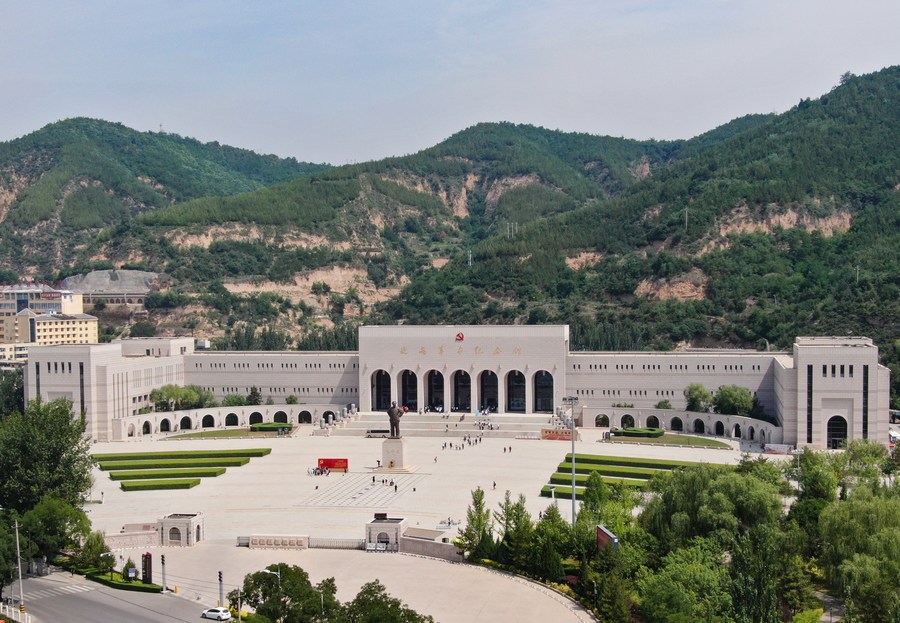
Yanan_Revolutionary_Site.
For those interested in understanding the tapestry of China’s past, the Yanan Revolutionary Site serves as an essential stop. As you traverse this storied city, you will not only learn about the pivotal moments that shaped a nation but also gain insight into the enduring Yan’an Spirit—a philosophy of resilience, hard work, and self-reliance that continues to influence Chinese society today.
Whether you’re an ardent student of history or a curious traveler seeking to immerse yourself in local culture, Yan’an promises an unforgettable journey into the heart of China’s revolutionary narrative.

Yanan_Revolutionary_Site.
The Rich History and Legends of Yanan Revolutionary Site
Unveiling Yan’an: A Tapestry of Revolutionary History and Legends
Nestled in the heart of Shaanxi Province, Yan’an (延安) is not merely a city; it is a cornerstone of modern Chinese history. Often hailed as the “Holy Land of the Chinese Communist Revolution,” Yan’an played a pivotal role from 1937 to 1948, serving as the base from which the Communist Party of China (CPC) orchestrated its strategies against both the Japanese invaders and the Kuomintang. This period not only shaped the political landscape of China but also birthed the enduring spirit known as the Yan’an Spirit, characterized by resilience, self-reliance, and a commitment to liberation.
Historical Significance
Yan’an’s rich history stretches beyond the revolutionary era, dating back to ancient times. It was a site of strategic importance during the Xia Dynasty and served as a cultural and political hub through the ages, witnessing the rise and fall of numerous dynasties, including the Tang and Song. However, its most notable chapter began in the 20th century when it became the final destination of the Long March, a harrowing military retreat undertaken by the Red Army to escape the encroaching forces of the Kuomintang.

Yanan_Revolutionary_Site.
From 1935, when Mao Zedong and other leaders settled in Yan’an, the city transformed into the headquarters of the CPC. Here, the party not only mobilized its forces but also developed its ideological framework, leading to significant victories in the War of Resistance Against Japanese Aggression and the subsequent civil war. The legacy of this period is embodied in the numerous revolutionary sites scattered across the city, including:
- Yangjialing Site: The former offices of the CPC Central Committee, where pivotal decisions were made.
- Wangjiaping Revolution Site: A key location for military planning and training.
- Date Garden: The site where the CPC Secretariat operated, showcasing the daily life and struggles of party leaders and members.
Legends and Folklore
Alongside its historical significance, Yan’an is steeped in legends that add a layer of mystique to its revolutionary narrative. One enduring tale is that of the Yellow Emperor, a legendary figure said to have lived in the region. This connection to the mythical past positions Yan’an not only as a site of revolutionary fervor but also as a cradle of Chinese civilization. The phrase “Three Yellows and One Holy Land” encapsulates the essence of Yan’an, linking its historical and cultural significance with its geographical features: the Yellow River, the Loess Plateau, and the mausoleum of the Yellow Emperor.
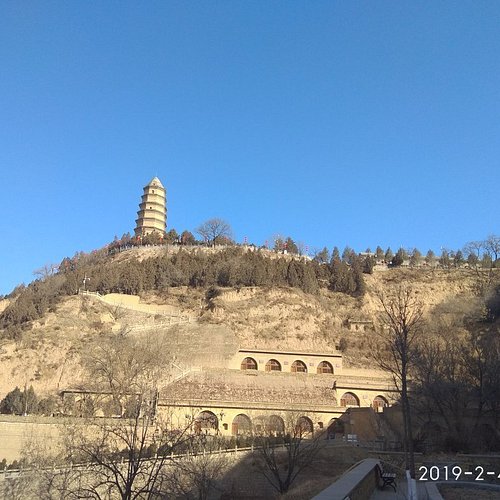
Yanan_Revolutionary_Site.
The Yan’an Spirit
The ethos of the Yan’an Spirit emerged during the difficult years of the revolution, serving as a guiding principle for the Communist Party. It emphasizes hard work, dedication, and the importance of self-improvement during challenging times. This spirit is not just an artifact of history; it continues to inspire modern Chinese society and is a testament to the resilience of the human spirit in the face of adversity.
Cultural Experiences
Visitors to Yan’an have the opportunity to immerse themselves in this rich tapestry of history and culture. The Yaodong (窑洞), traditional cave dwellings carved into the loess hills, provide a glimpse into the living conditions of revolutionary leaders like Mao Zedong. These structures are not only architecturally fascinating but also stand as symbols of the endurance and ingenuity of the people who lived and worked there.
Moreover, the vibrant Ansai Waist Drum Dance, a folk dance with deep roots in the region, showcases the spirited character of the locals, embodying the themes of joy and resilience that resonate with the revolutionary past.

Yanan_Revolutionary_Site.
Conclusion
Yan’an is a destination that transcends time, offering insights into the trials and triumphs of a nation in transformation. For travelers interested in the interplay of history, culture, and legends, Yan’an stands as an essential chapter in the story of China, inviting exploration and reflection on a journey through its revolutionary heart. Whether wandering through its historic sites or engaging with its lively local customs, visitors will find themselves enveloped in the enduring legacy of this remarkable city.
Main Highlights: What You Absolutely Can’t Miss
Yan’an, a city steeped in revolutionary history and cultural significance, offers an array of must-see sites that reflect its rich past. As the cradle of the Chinese Communist Revolution and a pivotal location during the Long March, Yan’an provides an unparalleled glimpse into the struggles and triumphs of the Chinese people. Here are the main highlights you absolutely cannot miss during your visit:
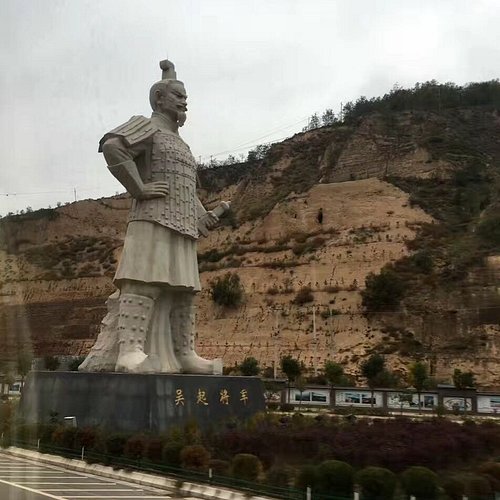
Yanan_Revolutionary_Site.
1. The Zaoyuan Revolutionary Site
The Zaoyuan Revolutionary Site is a cornerstone of Yan’an’s revolutionary heritage. Once the residence of Mao Zedong and other key Communist leaders, this site features spartan living quarters that showcase the austere lifestyle of the leaders during a tumultuous period in Chinese history. Visitors can marvel at the simplicity of their living conditions, including Mao’s distinctive wooden bathtub. This site serves as a poignant reminder of the commitment and sacrifices made during the revolutionary struggle.
2. Yangjialing Site
A visit to the Yangjialing Site, which housed the former offices of the Central Committee of the Communist Party of China, is essential for understanding the strategic decisions made during the revolution. The site is well-preserved and offers insightful exhibitions detailing the operations of the Communist leadership. Exploring the layout and structure provides a deeper appreciation of the political and historical climate of the time.
3. Baota Hill (Pagoda Hill)
Baota Hill, or Pagoda Hill, is not only a natural beauty but also a symbol of Yan’an’s revolutionary spirit. The hill is crowned with the iconic White Pagoda, offering panoramic views of the city and the surrounding landscape. Hiking to the top is a rewarding experience, allowing visitors to connect with the serene environment that inspired so many revolutionary thoughts and ideas.
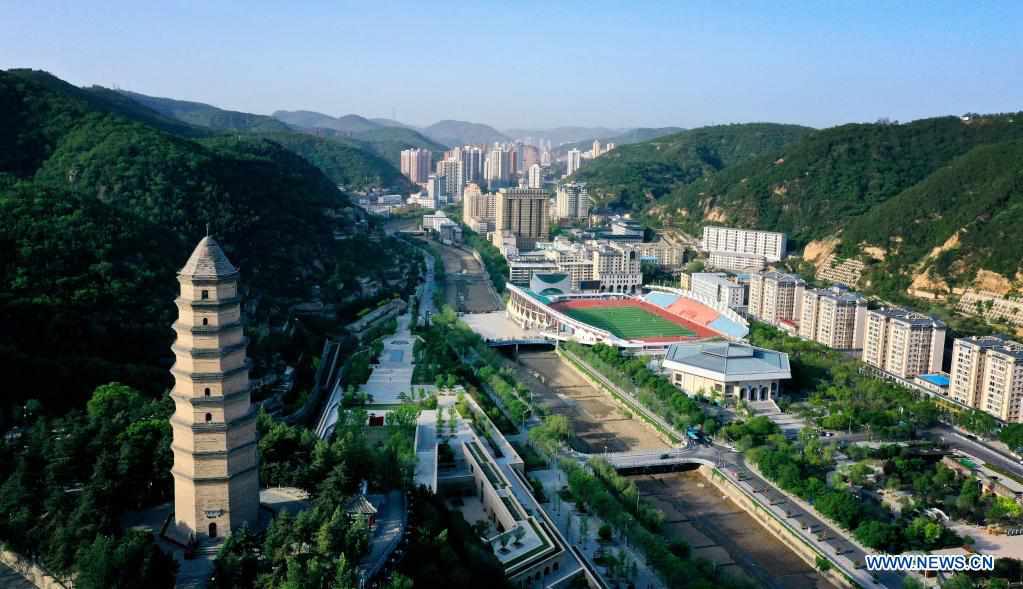
Yanan_Revolutionary_Site.
4. Nanniwan Revolution Site
The Nanniwan Revolution Site is famous for its role in the agricultural reforms initiated by the Communist Party. This site showcases how the local population transformed the barren landscape into productive farmland. The exhibition here highlights the ingenuity and resilience of the people, making it a poignant reflection of the Yan’an Spirit of self-reliance and hard work.
5. Wangjiaping Revolution Site
Another critical site is the Wangjiaping Revolution Site, which served as a military headquarters during the revolution. This area offers insights into the strategic planning and military operations that defined the era. It is an important location for those interested in the military tactics employed by the Communist forces.
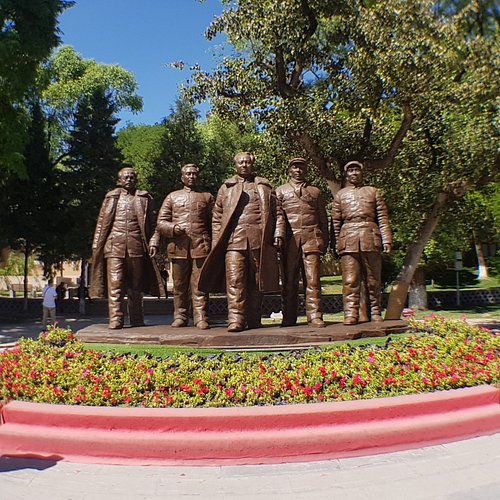
Yanan_Revolutionary_Site.
6. The Loess Plateau
The Loess Plateau, where Yan’an is situated, is not just a geographical feature; it is a testament to the resilience of the Chinese people. The rugged, yellow landscapes are mesmerizing, and the ongoing efforts to combat desertification highlight the region’s environmental significance. A stroll through this unique terrain provides a sense of the challenges faced by the communities that inhabit this area.
7. Cultural Experiences: Ansai Waist Drum Dance
Don’t miss the chance to witness the vibrant Ansai Waist Drum Dance, a folk performance that embodies the spirit of the locals. With its rhythmic beats and dynamic movements, this dance is a cultural highlight that connects visitors to the joyful and passionate character of the people from North Shaanxi. If you’re visiting during the period around Chinese New Year, you may have the opportunity to see grand performances celebrating local customs.
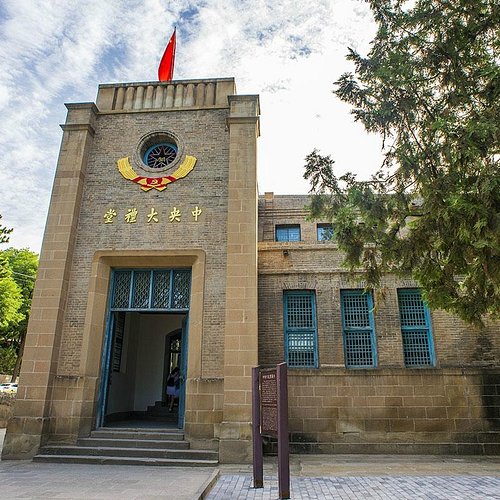
Yanan_Revolutionary_Site.
8. Local Cuisine
While exploring Yan’an, indulge in the local cuisine, which offers a taste of the region’s unique flavors. Dishes often feature ingredients sourced from the surrounding Loess Plateau, providing an authentic culinary experience that complements the historical journey through the city.
Conclusion
A visit to Yan’an is a journey through time, offering a rich tapestry of history, culture, and resilience. Each site tells a story of struggle, determination, and the indomitable spirit of the people. Whether you’re a history buff or simply curious about China’s revolutionary past, Yan’an promises an enlightening experience that is both educational and deeply moving.
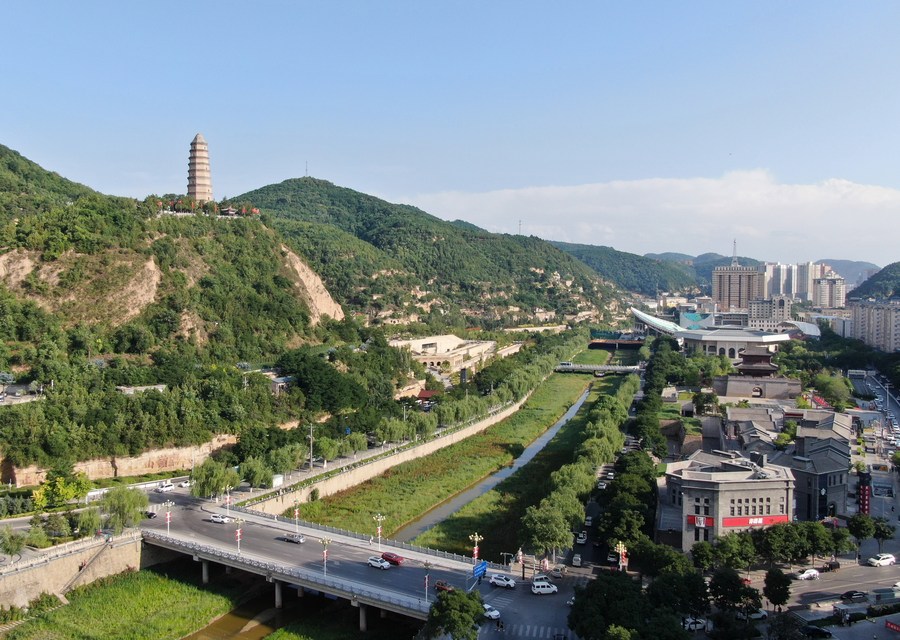
Yanan_Revolutionary_Site.
Planning Your Visit: A Practical Guide
Essential Information for Visiting Yan’an Revolutionary Site
Yan’an, the birthplace of the Chinese Communist Revolution, is a treasure trove of historical significance and natural beauty, making it a must-visit for anyone interested in Chinese history and culture. Here’s everything you need to know to plan your visit to this remarkable city.
Getting There
Location:
Yan’an is situated approximately 300 kilometers (186 miles) north of Xi’an, in Shaanxi Province. It lies on the middle reaches of the Yellow River and is surrounded by the Loess Plateau.
Transportation Options:
– By Air: The Yan’an Nanniwan Airport connects the city to major cities in China. From the airport, taxis or buses can take you into the city center.
– By Train: Yan’an is reachable by train from Xi’an and other major cities. The train journey offers scenic views of the countryside.
– By Bus: Long-distance buses operate regularly from Xi’an and neighboring cities, making it a convenient option for budget travelers.

Yanan_Revolutionary_Site.
Best Time to Visit
The ideal time to explore Yan’an is during July, August, and September, when the weather is generally mild and comfortable. Additionally, visiting around Chinese New Year (late January to early February) allows you to experience vibrant local festivals and customs.
Weather Considerations
Yan’an has a continental climate with an annual average temperature of 9.4°C (49°F). The region experiences significant temperature fluctuations between day and night. Here are some tips for dressing appropriately:
– Summer: Light clothing for daytime, but bring a warmer layer for cooler evenings.
– Winter: Warm layers are essential due to the cold temperatures, especially at night.
– Windblown Sand: Given its location on the Loess Plateau, bring sunglasses, a hat, and a scarf to protect against dust and wind.
Key Attractions
Yan’an is home to numerous revolutionary sites and cultural experiences. Here are a few highlights:
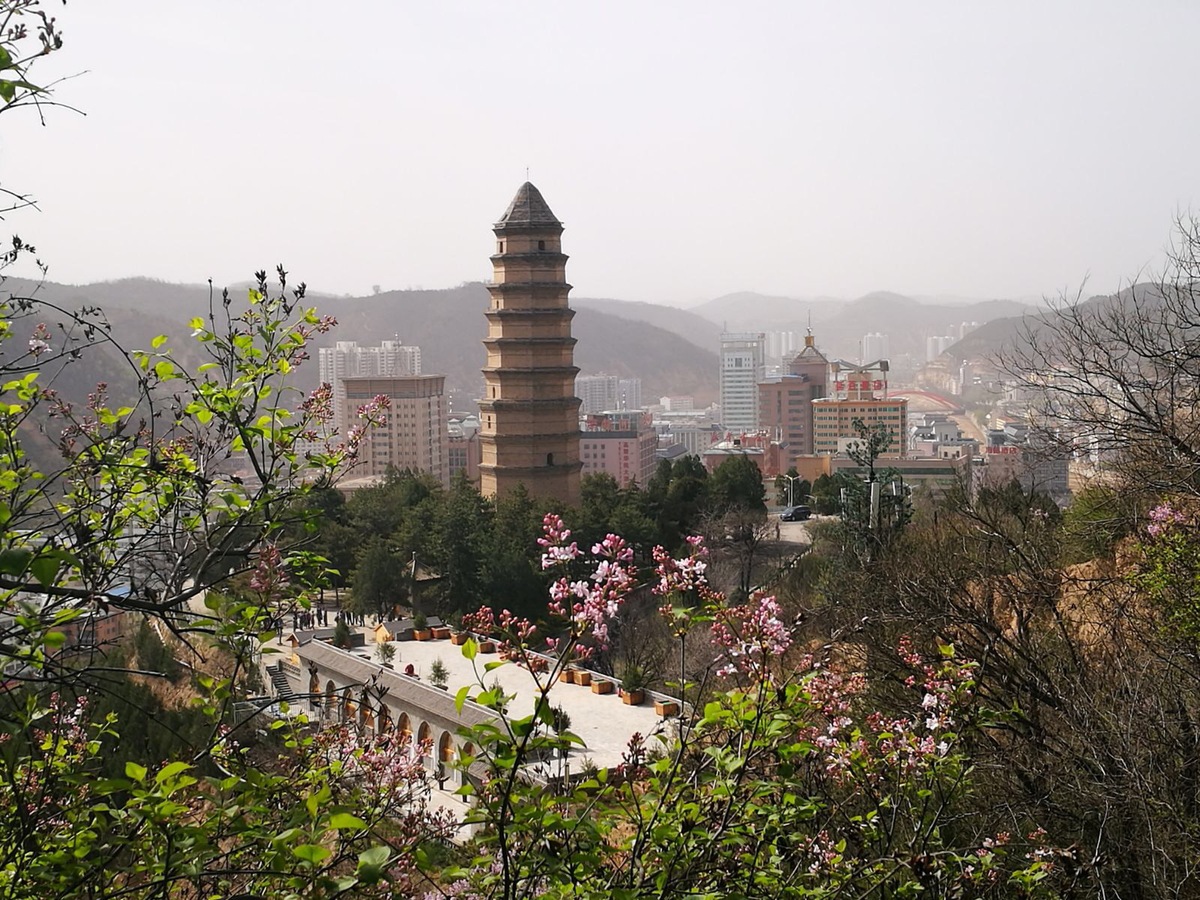
Yanan_Revolutionary_Site.
- Wangjiaping Revolution Site: Explore the quarters where key communist leaders lived and strategized.
- Yangjialing Site: Visit the former offices of the CCP Central Committee and learn about the history of the Communist Party.
- Baota Hill (Pagoda Hill): Offers panoramic views of Yan’an and is a perfect spot for photography.
- Nanniwan Revolution Site: Discover the agricultural innovations that were developed during the revolutionary period.
Don’t miss the chance to witness the Ansai Waist Drum Dance, a traditional folk dance that showcases the spirit and culture of the local people.
Cultural Insights
Yan’an is steeped in revolutionary history and is often referred to as the “Holy Land” of the Chinese Communist Revolution. While exploring, take a moment to reflect on the significance of the Yan’an Spirit, which embodies perseverance, self-reliance, and a commitment to the community.
Local Cuisine
Indulge in the local flavors of Yan’an. Popular dishes include:
– Pasta dishes unique to Shaanxi cuisine.
– Steamed buns (baozi) filled with various meats and vegetables.
– Local snacks like Liangpi (cold skin noodles) for a refreshing treat.
Practical Tips
- Language: English is not commonly spoken, so having a translation app or phrasebook may be helpful.
- Cash: While larger establishments may accept cards, it’s advisable to carry cash, especially in smaller shops or markets.
- Respect Local Customs: Familiarize yourself with local customs and etiquette, especially while visiting historical and cultural sites.
Conclusion
Visiting Yan’an is more than just a trip; it’s an immersive journey into the heart of Chinese revolutionary history. With its rich heritage, stunning landscapes, and vibrant culture, your experience here will undoubtedly enhance your understanding of China’s past and its ongoing narrative. Pack your bags, prepare your itinerary, and get ready for an enlightening adventure!
Tickets: Prices, Booking, and Tips
Visiting the Yan’an Revolutionary Site: Ticket Information and Tips
Embarking on a journey to Yan’an, the cradle of the Chinese Communist Revolution, offers a unique glimpse into modern Chinese history. This historic city is filled with revolutionary sites, museums, and monuments that narrate tales of resilience and leadership. Here’s everything you need to know about tickets, booking, and some handy tips for your visit.
Ticket Prices
-
General Admission: Entry to most revolutionary sites, including the Zaoyuan Revolutionary Site, typically costs around ¥30-¥50 (approximately $4-$7 USD). Some specific sites might have separate entry fees.
-
Discounts: Reduced ticket prices are often available for students, seniors, and children. It’s advisable to bring identification to avail of these discounts.
-
Combination Tickets: If you plan to visit multiple sites, consider purchasing a combination ticket that may offer a better value. Check local tourist information centers for current offers.
Booking Your Visit
-
Advance Booking: While ticket purchases can usually be made on-site, booking in advance is recommended during peak tourist seasons (July, August, and around Chinese New Year) to ensure availability and avoid long lines.
-
Online Options: Some websites and local travel agencies offer online ticket booking, providing a convenient way to secure your entry before you arrive. This is particularly useful for international travelers who may face language barriers on-site.
-
Guided Tours: For a more enriching experience, consider joining a guided tour. Many operators offer customized tours that include transportation, expert commentary, and visits to multiple revolutionary sites. Look for reputable agencies that specialize in historical tours.
Tips for Your Visit
-
Timing: The Yan’an Revolutionary Site is open from 8:00 AM to 6:00 PM. Arriving early can help you avoid crowds and allow for a more leisurely exploration of the sites.
-
Language: English signage may be limited at some locations. It’s helpful to download a translation app or carry a phrasebook to facilitate communication.
-
Dress Comfortably: Given Yan’an’s altitude and continental climate, dress in layers to accommodate fluctuating temperatures. Comfortable walking shoes are a must, as many sites involve walking on uneven terrain.
-
Cultural Etiquette: As a site of significant historical importance, it’s essential to be respectful during your visit. Be mindful of local customs and avoid disruptive behaviors that could detract from the solemnity of the sites.
-
Photography: While photography is generally permitted, always check for specific restrictions at individual sites, especially inside museums.
-
Stay Hydrated: The dry climate can be dehydrating, so carry a water bottle and drink plenty of fluids throughout your visit.
With these insights, your journey to the Yan’an Revolutionary Site promises to be both enlightening and memorable. This historic city is not just a destination; it’s a profound experience that connects you to the heart of China’s revolutionary spirit. Enjoy your exploration!
How to Get There: A Complete Transportation Guide
Navigating Your Journey to Yan’an Revolutionary Site
Yan’an, often heralded as the cradle of the Chinese Communist Revolution, offers an immersive experience into China’s historical narrative. Situated in the heart of Shaanxi Province, this city is well-connected, making it accessible for international travelers eager to explore its revolutionary past. Below is a detailed guide on how to reach the Yan’an Revolutionary Site (延安革命遗址) and its surrounding attractions.
Getting to Yan’an
1. By Air:
The most convenient way to reach Yan’an from major cities in China is by air. Yan’an Nanniwan Airport (ENY) serves domestic flights, primarily from Xi’an and a few other key cities.
- From Xi’an:
- Flight Duration: Approximately 1 hour.
- Airlines: Several domestic carriers operate flights between Xi’an Xianyang International Airport (XIY) and Yan’an Nanniwan Airport.
Once you arrive at Yan’an Nanniwan Airport, you can take a taxi or a shuttle bus to the city center, which is about 20 kilometers away.
2. By Train:
Yan’an is also accessible by train, although options can be limited compared to larger cities.
- From Xi’an:
- Train Duration: Around 5 to 7 hours, depending on the type of train.
- Train Station: Take a train from Xi’an Railway Station or Xi’an North Railway Station to Yan’an Railway Station.
Trains provide a scenic view of the Loess Plateau and are a comfortable way to travel. Once at Yan’an Railway Station, local taxis and buses are available to take you to the Revolutionary Site and other attractions.
3. By Bus:
For budget-conscious travelers, long-distance buses are a viable option.
- From Xi’an:
- Bus Duration: Approximately 6 to 8 hours.
- Departure Points: Buses depart regularly from the Xi’an General Long-Distance Bus Station.
Buses are a cost-effective choice and can be booked in advance online or at the station. Upon arrival at Yan’an Long-Distance Bus Station, taxis and local transport options will be readily available.
Local Transportation in Yan’an
Once you are in Yan’an, getting around is relatively easy.
-
Taxis: Taxis are widely available and reasonably priced. Ensure to have your destination written in Chinese, as English may not be widely understood.
-
Public Buses: Yan’an has an extensive bus system that can take you to major attractions. It’s a budget-friendly way to explore the city, though schedules may vary.
-
Walking and Cycling: The city’s compact size allows for easy exploration by foot or bicycle. Many of the revolutionary sites are within walking distance of each other.
Key Sites to Visit in Yan’an
Once you’ve arrived, don’t miss out on these significant locations:
- Yangjialing Site: The former offices of the CCP Central Committee, offering a glimpse into the revolutionary headquarters.
- Wangjiaping Revolution Site: A must-visit for its historical significance and preserved architecture.
- Baota Hill (Pagoda Hill): Climb for stunning views of the city and surrounding area, along with cultural relics.
- Nanniwan Revolution Site: Known for its historical importance, this site emphasizes the spirit of self-reliance during tough times.
Final Tips
- Language: While some signage is available in English, consider downloading translation apps or carrying a phrasebook to facilitate communication.
- Weather Preparedness: Yan’an experiences a continental climate, so pack accordingly. Summers can be hot, while nights can be cool, especially in spring and fall.
- Local Customs: Engage with the local culture by attending folk customs and performances, particularly during the Chinese New Year period when celebrations are vibrant.
With this guide, you’re well-equipped to embark on an enriching journey to Yan’an, where history and culture await your exploration. Enjoy your travels!
Local Cuisine and Accommodation Nearby
Discovering Local Flavors and Comfortable Stays in Yan’an
As you venture into the heart of Yan’an, a city steeped in revolutionary history and culture, you’ll find that the local cuisine and accommodation options reflect the rich heritage of the Loess Plateau. Here’s a guide to help you savor the flavors and rest comfortably during your exploration of this historic site.
Taste the Local Cuisine
Yan’an’s culinary scene is an integral part of the region’s cultural tapestry. Here are some must-try dishes and local specialties:
-
Lao Gan Ma Chili Sauce (老干妈辣椒酱): While this sauce hails from Guizhou, it has become a beloved condiment across China, and you’ll find it prominently featured in many Yan’an dishes. Its spicy, savory flavor is a staple for locals.
-
Shaanxi Noodles (陕西面食): Handmade noodles, often served with a variety of toppings like minced meat, vegetables, and spicy sauces, are a local favorite. Try them in a soup or stir-fried for a fulfilling meal.
-
Sour Soup (酸汤): This traditional sour soup made with local ingredients is perfect for warming you up during the cooler months. It often features pickled vegetables and is a common dish in rural Shaanxi.
-
Peony Seed Cake (芍药籽饼): Don’t miss out on this unique dessert, made from the seeds of the wild peony, which is intricately linked to the region. Its distinct flavor and texture make it a delightful treat.
-
Waist Drum Dance Snacks (腰鼓舞小吃): Often enjoyed during local festivals, these street snacks range from spicy skewers to sweet pastries, allowing you to experience the vibrant culture of Yan’an through its food.
Recommended Restaurants
-
Yan’an Old Town Restaurant (延安老街餐厅): Nestled in the historic part of the city, this restaurant offers authentic Shaanxi cuisine, including a variety of noodle dishes and local snacks. The ambiance is warm and welcoming, perfect for a family meal.
-
Huanghe Restaurant (黄河餐厅): Known for its generous portions and traditional recipes, this eatery specializes in local favorites and is popular among both locals and tourists.
-
Lao Zhang’s Noodle Shop (老张面馆): A small, family-run establishment that serves some of the best handmade noodles in Yan’an. The cozy atmosphere makes it a great spot for a quick bite.
Comfortable Accommodations
After a day of exploration, you’ll want a comfortable place to rest. Here are some recommended accommodations that blend convenience with local charm:
-
Yan’an International Hotel (延安国际酒店): This well-rated hotel offers modern amenities, comfortable rooms, and is conveniently located near major revolutionary sites. The hotel staff is known for their hospitality and can assist you in planning your local visits.
-
Zhongshan Hotel (中山大酒店): A budget-friendly option with simple yet comfortable rooms. It’s situated close to Yan’an’s historical attractions, making it easy to explore on foot.
-
Yaodong Homestay (窑洞民宿): For a unique experience, consider staying in a traditional Yaodong cave dwelling. These accommodations provide an authentic taste of local life and the historical significance of the area, allowing you to connect more deeply with the Yan’an spirit.
-
Baota Mountain Resort (宝塔山度假村): Nestled near Baota Hill, this resort offers stunning views and a tranquil atmosphere. It’s perfect for travelers looking to unwind amidst nature after a day of historical exploration.
Final Thoughts
Yan’an is not just a destination for history buffs; it’s a place where you can immerse yourself in local culture through its cuisine and hospitality. Whether you’re savoring the flavors of traditional Shaanxi dishes or resting in a cozy Yaodong, your journey through this historic city will undoubtedly be a memorable one.
Frequently Asked Questions
Frequently Asked Questions about Yan’an Revolutionary Site
1. What is the Yan’an Revolutionary Site known for?
The Yan’an Revolutionary Site is famous for being the center of the Chinese Communist Revolution from 1937 to 1948. It served as the military headquarters for Mao Zedong and the Communist Party, marking a pivotal period in Chinese history. The site includes numerous historical locations, such as the Yangjialing Site and the Baota Hill, which are significant for understanding the revolutionary spirit of China.
2. How do I get to Yan’an?
Yan’an is situated about 300 kilometers from Xi’an, the capital of Shaanxi Province. Visitors can reach Yan’an by train, bus, or car from Xi’an. There are regular bus services that connect the two cities, and the journey typically takes around 4-5 hours. Alternatively, you can fly directly to Yan’an Nanniwan Airport from major cities in China.
3. What are the must-visit sites in Yan’an?
While there are over 140 revolutionary sites in Yan’an, some of the must-visit locations include:
– Wangjiaping Revolution Site: An important site showcasing the early days of the Communist movement.
– Yangjialing Site: The former offices of the CCP Central Committee.
– Zaoyuan Revolutionary Site: Where Mao Zedong and other leaders lived and worked.
– Baota Hill: Offering stunning views and a rich historical context.
4. Is there an entrance fee for the revolutionary sites?
Most revolutionary sites in Yan’an do not have an entrance fee, but some museums and specific locations may charge a small fee for entry. It is advisable to check in advance or inquire at your accommodation for details regarding specific sites.
5. What is the best time of year to visit Yan’an?
The ideal time to visit Yan’an is during the months of July, August, and September when the weather is most pleasant. Additionally, visiting around Chinese New Year offers a unique opportunity to experience local festivals and folk customs, such as the vibrant Ansai Waist Drum Dance.
6. What should I wear while visiting Yan’an?
Given Yan’an’s continental climate, layering is advisable. Days can be warm, while nights can be quite cool. It’s also wise to wear comfortable shoes, as many sites require walking. If you visit during windy seasons, consider bringing sunglasses and a hat to protect yourself from dust and sand.
7. Are there language barriers for international travelers?
While the main attractions often have signage in English, it is common for fewer locals to speak English fluently. It is helpful to learn a few basic Mandarin phrases or consider hiring a local guide for a more enriching experience.
8. What cultural experiences can I expect in Yan’an?
In addition to exploring revolutionary history, visitors can experience the local culture through folk performances such as the Ansai Waist Drum Dance. The region is also known for its unique culinary offerings, including traditional Shaanxi dishes. Engaging with local customs and traditions will deepen your understanding of the area’s rich heritage.
Final Thoughts on Your Trip
Reflecting on Your Journey to Yan’an
As you prepare to leave the historic city of Yan’an, take a moment to reflect on the profound experiences and insights gained from your visit to this significant site of Chinese revolutionary history. Nestled in the rugged beauty of the Loess Plateau, Yan’an is not just a place; it’s a testament to resilience, dedication, and the enduring spirit of a people who shaped a nation.
Key Takeaways from Your Visit:
-
Historical Significance: Yan’an served as the heart of the Chinese Communist Revolution from 1937 to 1948, making it an essential stop for anyone interested in understanding modern Chinese history. The revolutionary sites, including the Yangjialing Site and the historic Yaodong dwellings, provide a glimpse into the lives of leaders like Mao Zedong during a transformative era.
-
Cultural Insights: Beyond its revolutionary past, Yan’an is a vibrant cultural hub. Engaging with local customs, such as the energetic Ansai Waist Drum Dance, allows you to experience the unique folk traditions of the Loess Plateau, enriched by centuries of history.
-
Natural Beauty: The breathtaking landscapes surrounding Yan’an, particularly the majestic Hukou Waterfall and the undulating hills of the Loess Plateau, remind us of the intricate relationship between nature and culture. This rugged terrain has not only shaped the lives of its inhabitants but also carries the legacy of ancient Chinese civilization.
-
Personal Connection: Whether standing at the Pagoda Hill or exploring the remnants of revolutionary life, each site offers a connection to the past that is both inspiring and humbling. The spirit of Yan’an, characterized by hard work and self-reliance, resonates deeply, inviting you to carry these lessons forward in your own life.
As you depart from Yan’an, let the stories of perseverance and commitment linger in your thoughts. This city, steeped in history and culture, serves as a reminder of the power of collective action and the importance of understanding where we come from as we navigate our paths forward. Whether you are a history buff, a culture enthusiast, or simply a curious traveler, Yan’an has undoubtedly enriched your